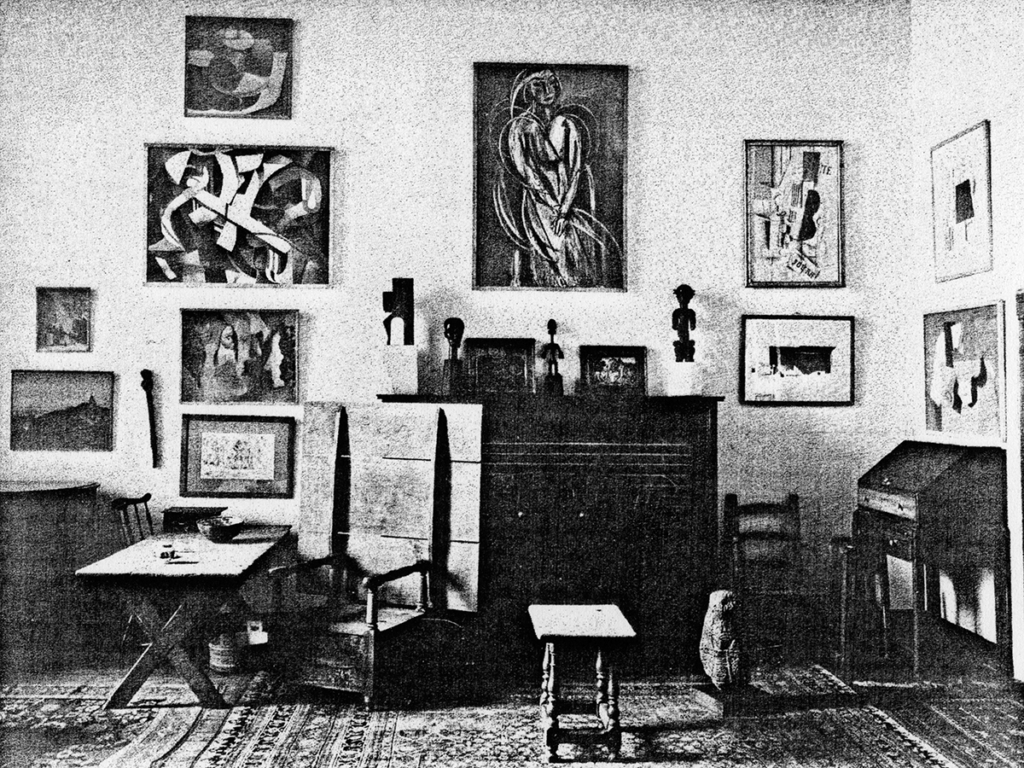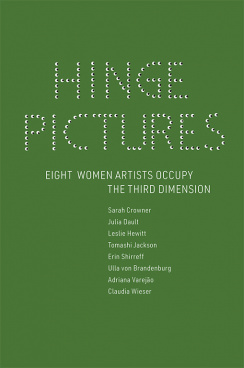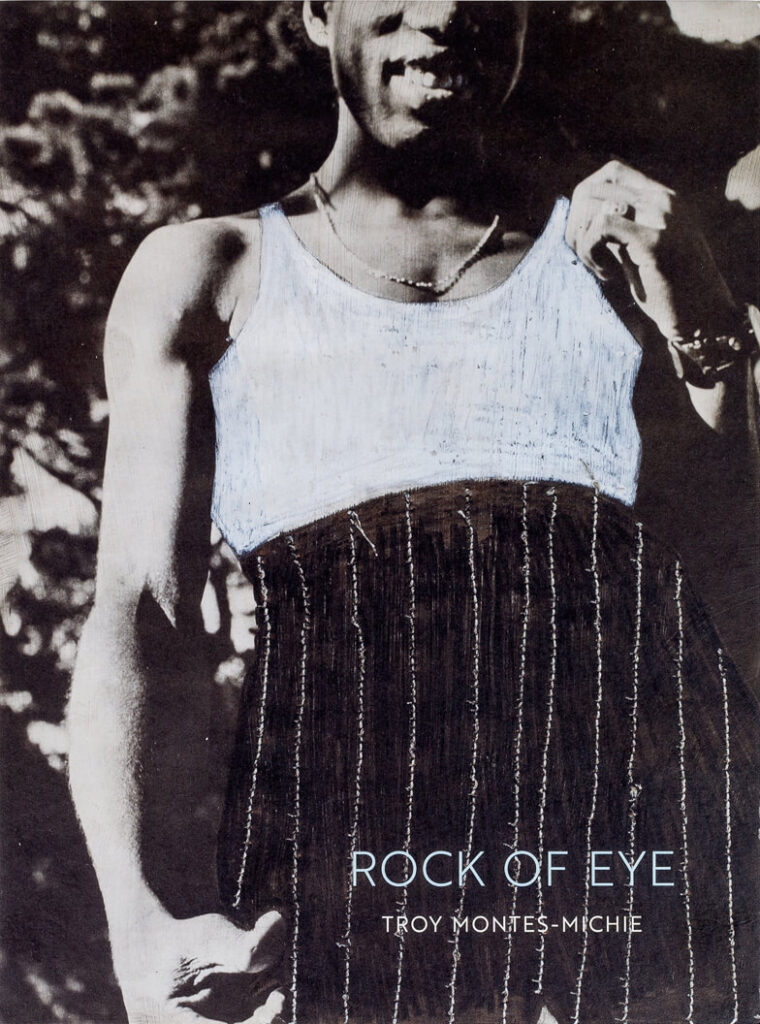The Disobedient CopyistAdam Pendleton’s Language of ResistanceAndrea Andersson
excerpts, 12/07/16
Originally published in Becoming Imperceptible by Adam Pendleton, Siglio/CAC, 2016. Andrea Andersson is the curator of the eponymous exhibition which took place the same year. All rights reserved. © 2016 Andrea Andersson.

from Becoming Imperceptible by Adam Pendleton
“We were not taught to speak but to stammer—and only by listening to the swelling noise of the century and being bleached by the foam on the crest of its wave did we acquire a language.”
—Osip Mandelstam, copied by Gilles Deleuze.1
For his 2011 interview with Adam Pendleton for BOMB Magazine, Thom Donovan framed Pendleton’s performance Revival within a tradition of live art that has its “origins in civil disobedience and the civil rights movement.”2 With Pendleton’s recent Black Lives Matter paintings and wall works, his practice presents even more demonstratively as a form of protest. And yet, with its formal precision and obscured vocabulary of text and images culled and cut from books and films from his library, Pendleton’s protest maintains a kind of impenetrability—a degree of civility that recalls the recitations of another copyist.
“I would prefer not to,” the refrain of Melville’s Bartleby, seems a far fainter cry than the images from the history of black resistance we might expect to figure in Pendleton’s oeuvre. But Pendleton’s protest, like Bartleby’s, refuses a “common usage,” even the “common sense,”3 we anticipate from more conventional demonstration. Like Bartleby’s persistent response, Pendleton’s work gains both its strength and its sense of estrangement from an almost perverse recourse to recursion.
In the five months since its first appropriation by Pendleton for a wall work at Pace Gallery, London, the text, “Black Lives Matter,” has figured, more and less legibly, in three different wall works, four paintings, and one flag. Indeed, with every iteration, it appears increasingly abstracted. Not included in this preliminary tally are Pendleton’s recent sculptures in the shapes of letters, extracted from an earlier slogan of resistance, “Black Dada.” Here, only the silkscreened image of a mask familiar from the Black Lives Matter works points to the fullest expression of Pendleton’s recent protest (and the relationship between Pendleton’s two serial bodies of work; the mask first appeared in circulation with the first publication of Pendleton’s Black Dada Reader in 2008).4 Increasingly across these works, the communicative capacity of splintered language resounds. Pendleton has gone further, identifying “incompleteness as the most ethical mode of representation.”
Certainly, “incompleteness” has been a formal concern of Pendleton’s since his earliest works. The Black Dada paintings, begun in 2008, take their name from a quotation from the 1964 poem by LeRoi Jones (later identified as Amiri Baraka) “Black Dada Nihilismus”—but never in its entirety. That is, in Pendleton’s compositions, we are only ever granted fragments of language, remaindered letters towards an impossible whole. And in the paintings, the individual letters figure alongside cropped, photographic details from a canonical work—Sol LeWitt’s “Variations of Incomplete Open Cubes” (1974)—which takes potentiality and its counterpoint, fragmentation, as its subject as much as its form. LeWitt’s work, comprised of 122 incomplete cubes, as its name suggests, holds the distinction of serving as material illustration for a kind of “absurdist nominalism”5 in Rosalind Krauss’s seminal 1978 essay, “LeWitt in Progress.” Throughout her essay, Krauss quotes from Samuel Beckett’s Molloy, copying his descriptive passages on the iterative, painstaking process of sucking stones.6 She quotes from LeWitt himself, who describes work “which uses the idea of error, a work that uses the idea of infinity, a work that is subversive, a work that is not original.”7 She counters readings that see in LeWitt’s progressions the clarity and calculation of pure reason and points, instead, to aporia … ”because aporia is a dilemma rather than a thing.”8
Krauss describes exhaustive, unrelenting, and repetitive process. She lifts straight from Beckett. Pendleton lifts from LeWitt.9 In each case of iterative abundance, we are provided at once “too much and not enough,”10 the description Craig Dworkin uses to describe the two poles of dysfluency, commonly referred to as stuttering, in his essay on phonemic “malfunction.”11 In “The Stutter of Form,” Dworkin identifies the two standard clinical categories of stuttering as either the “freezing” or “breaking” of syllables.12 He goes on to describes language “strained to its limits,” an “inaudible limit language” in which “we can hear the body speak.”13 Such is the language of Pendleton, a self-proclaimed “irrational language,” operating at the margins, at the limits, “pushed … to its silence.”14
“Frozen motion” is the expression Pendleton uses to describe his images taken from film stills (a recurrence in his series System of Display). It seems an apt description for a practice hovering between states of performance and objecthood. It frames a work like “Satomi,” a silent, looped six-and-a-half second excerpt from Pendleton’s 2009 video work BAND,15 in which the vocalist quietly turns her head from left to right. The sequence, employing the repetitive logic of the stutter, refuses resolution. Broken off from its whole, the visual passage is a kind of glitch, an error in the system, but because of its penchant for return, the film sustains a magnificent potential, the possibility of variable outcome. To quote one of Pendleton’s regular sources, the poet Susan Howe, “I hear the stutter as a sounding of uncertainty.”16 Herein lies the stammer’s disobedient nature.
In his interview with Pendleton, Donovan describes another “purely gestural” composition in the tradition of “live art.” Pointing to a collaboration between Abbey Lincoln and Max Roach, he describes how “voice evokes a different kind of language—one that is communicated through the medium of the body.” He uses the example to identify “modes of protest, making one’s body ‘the case’ through civil disobedience.”17 Pendleton responds with qualification: “I think I become a player in the work, although it’s very hard to find me there. This is intentional. Of course I cannot use the same means through which you would protest.”18
In his essay, “He Stuttered,” Gilles Deleuze describes the performative “possibility” of a language, “when saying is doing”—that is, when the artist “makes the language as such stutter.”19 He writes, “This, at least, is what happens in great writers like Melville.”20 When a “language trembles from head to toe,” we are confronted, Deleuze argues, with the invention of a minor language, which exists in a ceaseless “state of disequilibrium” that “exceeds the possibilities of speech”:21
It is a painting or a piece of music, but a music of words, a painting with words, a silence in words, as if the words could now discharge their content: a grandiose vision or a sublime sound … Words paint and sing, but only at the limit of the path they trace through their divisions and combinations. Words create silence … 22
Words discharged of content. Such was the goal for Dada—a rupture of the language and logic that had allowed for and fueled a great world war. In its stead, Dada offered critical senselessness. It is easy to hear the stutter in Dada: a broken consonant in perpetual repeat. With the “Black Lives Matter” movement, another language is sought to respond to more lives taken—needlessly and brutally. For Pendleton, Dada is a place to begin, however insufficient. He absorbs and departs from its disobedient nature. Bad Dada. Bad Black Dada.23 Broken, suspended, silenced Dada.
Ah, Bartleby! Ah, humanity!24
endnotes
- Deleuze, Gilles. “He Stuttered.” 1993. In Essays Critical and Clinical. Translated by Daniel W. Smith and Michael A. Greco. New York: Verso, 1998. 105. Deleuze borrows language from many sources in his essay, “He Stuttered,” moving seamlessly from his prose to another’s, providing attribution only in his endnotes. Deleuze’s writings figure prominently in Pendleton’s library and imagination.
- Pendleton, Adam. Interview by Thom Donovan. BOMB Magazine 114 (Winter 2011).
- Melville, Herman. “Bartleby, the Scrivener: A Story of Wall-Street.” 1853. In The Piazza Tales. New York: Dix, Edwards & Co., 1856. In Melville’s “Bartleby, the Scrivener: A Story of Wall-Street,” the narrator, frustrated by the copyist’s redundant and nonsensical replies, demands: “You are decided, then, not to comply with my request—a request made according to common usage and common sense?” (52). Later, when pressed further, Bartleby responds, “At present I would prefer not to be a little reasonable” (72).
- Mousse will rerelease the Black Dada Reader in 2016. Pendleton, Adam. Black Dada Reader. Milan: Mousse, 2016.
- Krauss, Rosalind. “LeWitt in Progress.” October 6 (Fall 1978): 46-60. 58.
- “I transfer to the right pocket of my greatcoat, in which there are not stones left, the five stones in the right pocket of my trousers, which I replace by the five stones in the left pockets of my trousers, which I replace by the six stones in the left pocket of my greatcoat …” Ibid., 48. Philosopher Gilles Deleuze points to “the permutation of ‘sucking stones’ in Molloy,” as well as Bartleby’s “I would prefer not to” as examples of “exhaustive” and “exhausting series” in his essay, “The Exhausted.” [Deleuze, Gilles. “The Exhausted.” 1993. In Essays Critical and Clinical. Translated by Daniel W. Smith and Michael A. Greco. New York: Verso, 1998. 153.]
- Krauss, 47.
- Pendleton and Donovan. BOMB Magazine. Donovan uses the same vocabulary in his description of Pendleton’s practice. “With Pendleton’s work,” he writes, “even though we are often left with aporias and blind spots, we feel the force of historical matter self-organizing and finding form beyond representability and essence.”
- Of his appropriative practice, Pendleton has explained, “Since I am constantly lifting words, sentences, images from a wide variety of sources each project typically begins and ends with a stack of books. The book will address the question of how to best represent this process.” Of course, some of those words, sentences, and images that Pendleton has lifted are those of Sol LeWitt. In his 1969, “Sentences on Conceptual Art,” LeWitt wrote, “Irrational thoughts should be followed absolutely and logically.” [LeWitt, Sol. “Sentences on Conceptual Art.” 0-9, 1969.] Adam Pendleton followed in his 2008 contribution to Manifesta 7, the European art biennial, with his “Black Dada Manifesto”: “The Black Dada must use irrational language.”
- Dworkin, Craig. “The Stutter of Form.” In The Sound of Poetry / The Poetry of Sound, edited by Craig Dworkin and Marjorie Perloff, 166-83. Chicago: University of Chicago Press, 2009. 177.
- Ibid., 167.
- Ibid., 181.
- Ibid., 168.
- Deleuze, “He Stuttered.” 113.
- Satomi Matsuzaki provides the vocals for San Francisco-based Deerhoof, who collaborated with Pendleton for his film, BAND, a kind of reimagination of Jean-Luc Godard’s film, Sympathy for the Devil (1968). Godard’s film documents the Rolling Stones as they recorded the lead track of their 1968 album, Beggar’s Banquet, while also meditating on the Black Panthers, the demonstrations of May 1968 and the possibilities of revolution. Pendleton’s three-channel video, BAND, follows Deerhoof’s recording of “I Did Crimes for You,” from their recent album, layering and confounding historical moments.
- Foster, Edward. “An Interview with Susan Howe.” Talisman: A Journal of Contemporary Poetry and Poetics 4 (Spring 1990). 38.
- Pendleton and Donovan, BOMB Magazine.
- Pendleton proposes an alternate form of protest in which the subject “become[s] imperceptible.” As Deleuze writes on the subject of stuttering, “Everyone can talk about his memories, invent stories, state opinions in his language; sometimes he even acquires a beautiful style … But when it is a matter of digging under the stories, cracking open the opinions, and reaching regions without memories, when the self must be destroyed, it is certainly not enough to be a ‘great’ writer, and the means must remain forever inadequate. Style becomes nonstyle, and one’s language lets an unknown foreign language escape from it, so that one can reach the limits of language itself and become something other than a writer, conquering fragmented visions that pass through the words of a poet, the colors of a painter, or the sounds of a musician.” [Deleuze, “He Stuttered.” 113.]
- Deleuze, “He Stuttered.” 107.
- Ibid., 108.
- Ibid., 109.
- Ibid., 113.
- 23. Pendleton, Adam. “Amiri Baraka (1934-2014).” Artforum (March 21, 2014).
- Melville, “Bartleby.” 107. The final line from Melville’s “Bartleby, the Scrivener: A Story of Wall-street” sounds a lamentation for the death of the copyist and, moreover, for a society that could neither respond to his form of protest, nor imagine alternative histories and forms of logic.
see also
Books
Hinge PicturesEight Women Artists Occupy the Third DimensionWorks by Sarah Crowner, Julia Dault, Leslie Hewitt, Tomashi Jackson, Erin Shirreff, Ulla Von Brandenburg, Adriana Varejão and Claudia Weiser, and essays by Andrea Andersson and Alex Klein

Books
Rock of EyeEssays by Andrea Andersson and Tina Campt, interview by Brent Hayes Edwards and afterword by Cameron Shaw

✼ not stones, not stale bread:
The book object. Object as aim. Object as thing. “In committing himself to book-objects, Dick Higgins confronted object status . . . the objectification of the creative act and the rise of art as a commodity object.” Call It Something Else at the Reina Sofia through January 22, 2024, curated by Alice Centamore and Christian Xatrec.
[...]